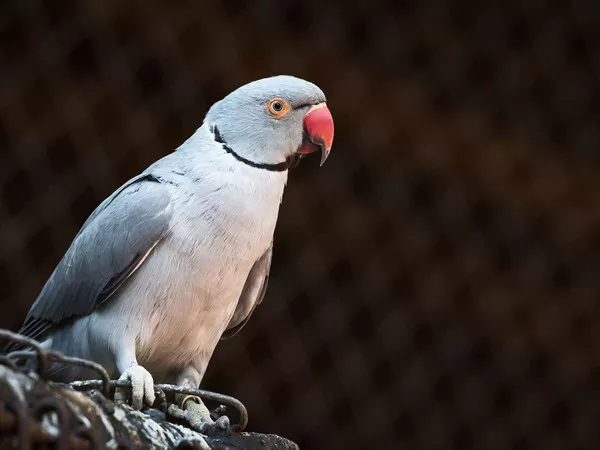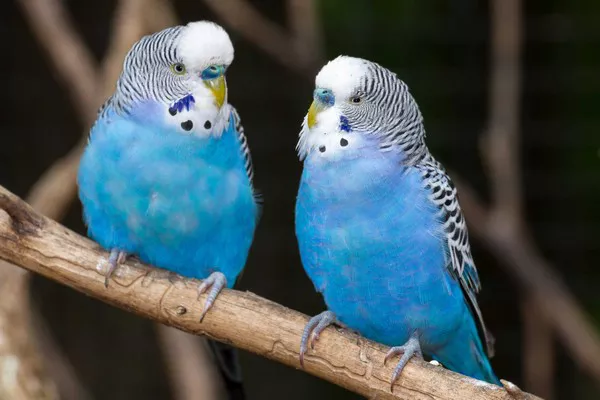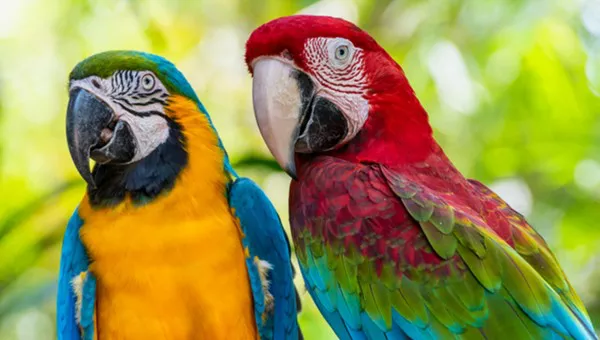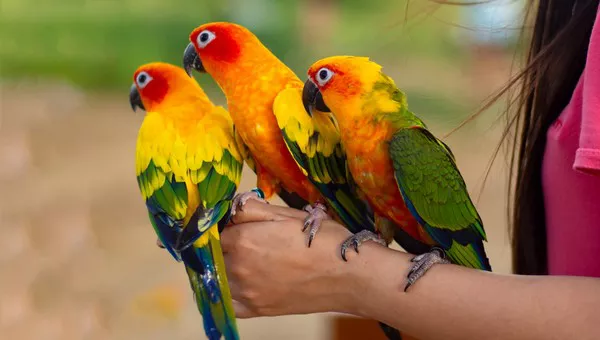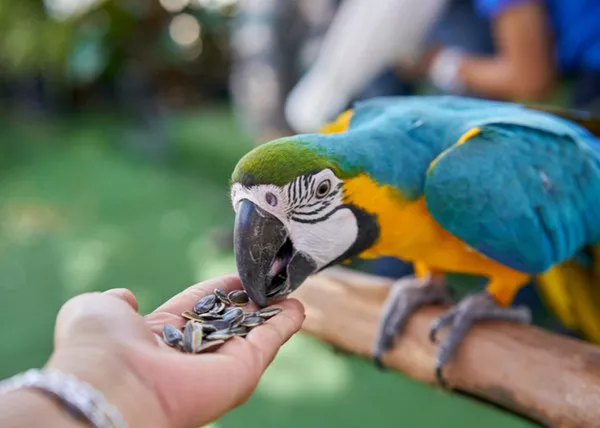If you’re lucky enough to have a sun conure (or two) in your life, you know how charming, colorful, and, let’s be honest, LOUD these little birds can be. These playful parrots can bring so much joy and sunshine into your world that it might leave you wondering, “When do these beautiful birds fall in love and start a family?” Well, you’ve come to the right place, my friend! Let’s dive into the feathery, flirty world of sun conures and figure out when exactly they mate.
Getting to Know the Sun Conure
Before we get to the romance, let’s learn a little about our brightly colored friends. Sun conures are medium-sized parrots, known for their vibrant yellow, orange, green, and blue feathers. They’re native to northeastern South America, where they hang out in tropical forests and savannas. These guys are full of energy, and they love nothing more than a good screech (they don’t have “inside voices”).
But they’re not all noise! Sun conures are also extremely affectionate and social birds. They love to be around their flock—or in your case, their humans—and they form deep bonds. In the wild, these birds often mate for life, sticking with their chosen partner through thick and thin (or in their case, through molting and squawking).
The Right Age for Love
So, you’ve got a pair of sun conures, and you’re wondering, “When is my little feathery couple going to start making babies?” Well, just like people, sun conures need to reach a certain age before they’re ready for love.
Sun conures typically reach sexual maturity between 1 and 3 years old. This is when they’re physically developed enough to breed, but their emotional maturity might take a little longer. Some sun conures act like teenagers well into their second year—so if they’re more interested in playing with toys and hanging upside down than flirting with each other, give them some time. The birdy dating scene doesn’t need to be rushed!
Seasonal Romance: When the Mood Strikes
In the wild, sun conures don’t just start mating any old time. Like many animals, they follow a seasonal pattern, and breeding season usually happens during the spring and summer. Why? Because the warmer weather brings more food and resources, which are important for raising baby birds. If you were trying to raise a family, you’d want to do it when there was plenty of food on the table, right?
In their natural habitat in South America, springtime happens during our fall (around September to December). But if you live in the Northern Hemisphere, your sun conures will likely sync their love lives with your spring and summer, between March and July. That’s when the sun is shining, and your birds might start feeling the love in the air. It’s like nature’s way of telling them, “Hey, it’s time to start a family!”
Setting the Mood: Nesting Behavior
Now, you might be wondering, “How do I know when my sun conures are ready to mate?” Well, they don’t light candles or play romantic music (though that would be adorable). Instead, you’ll notice some nesting behavior.
When sun conures are ready to mate, they start looking for a cozy, private space to build their nest. In the wild, they would look for tree cavities or other sheltered areas. In your home, this might mean they start investigating dark corners of their cage or even your furniture. Female sun conures might start collecting materials like paper, feathers, or even pieces of toys to line their “nest.” You might also notice your birds becoming a bit more territorial, especially around their chosen nesting spot. Hey, no one likes visitors when they’re trying to start a family!
The Courtship Dance
Ah, the courtship dance! Sun conures are not shy when it comes to showing their affection. If your pair is getting ready to mate, you might witness a bit of a performance. The male sun conure usually initiates things by fluffing up his feathers, bobbing his head, and making soft chirping noises (a far cry from their usual ear-piercing screeches). It’s like he’s saying, “Hey baby, check out these feathers. Aren’t I handsome?”
The female might respond by preening the male, which is basically bird language for “I like you too.” This mutual grooming is an important part of bonding, and it helps strengthen their relationship. After all, a couple that grooms together stays together!
If things go well, the male and female will start rubbing their beaks together in what looks like little birdy kisses. It’s a heart-melting display of affection, and if you’re watching, you might feel like you’re intruding on their private moment!
Mating Time
Once the courtship dance is complete, it’s time for the actual mating to happen. Now, bird mating is a bit different from what you might expect. Sun conures don’t have the same kind of reproductive organs as mammals, so they engage in what’s called a “cloacal kiss.” Both birds have an opening called a cloaca, and when they’re ready to mate, they press these openings together. It’s quick, and if you blink, you might miss it!
But don’t worry—you’ll know if your birds have mated successfully, because soon after, the female will start laying eggs.
Egg-Laying and Incubation
If your conures have successfully mated, you can expect the female to start laying eggs about 5-10 days later. A typical clutch for sun conures consists of 3-5 eggs, though it can vary. She’ll usually lay one egg every other day until she’s done.
Once the eggs are laid, the female takes on most of the responsibility for keeping them warm. She’ll sit on the eggs (a process known as incubation) to keep them at just the right temperature. The male will pitch in by feeding her and guarding the nest, which is pretty sweet if you ask me.
The incubation period for sun conure eggs is about 23-27 days. During this time, it’s important not to disturb the nest too much, as this can stress out the parents. They need their space to focus on the task at hand—hatching those adorable little chicks!
Baby Sun Conures: The Hatchlings Arrive!
After nearly a month of waiting, the eggs will start to hatch, and tiny, featherless chicks will emerge. Sun conure babies are born completely helpless, with their eyes closed and no feathers to speak of. But don’t worry, they grow fast!
Both parents will work together to feed the babies, which involves regurgitating food into their little beaks (not the most glamorous job, but hey, parenting is hard work). For the first few weeks, the chicks are completely dependent on their parents for warmth, food, and protection.
Growing Up Fast
Sun conure chicks grow quickly, and within a few weeks, they’ll start developing their feathers. Their first feathers are often a duller version of their parents’ bright plumage, but as they get older, their colors will become more vibrant.
At around 8-10 weeks old, the chicks will start to fledge, which means they’re ready to leave the nest and try flying for the first time. It’s an exciting milestone for any young bird! After fledging, the chicks will still stick close to their parents for a while, learning important skills like how to find food and avoid danger. Eventually, though, they’ll become independent and fly off to start their own lives (or, in your case, start causing trouble around the house).
What About Breeding in Captivity?
Now, if you’re a sun conure owner, you might be wondering whether breeding your birds at home is a good idea. It’s definitely possible to breed sun conures in captivity, but it’s important to make sure you’re prepared for the responsibility. Raising baby birds can be a lot of work, and you need to be ready to provide them with the proper care and environment.
Here are a few things to keep in mind if you’re thinking about letting your sun conures breed:
Housing: Make sure your birds have a spacious cage with plenty of room for a nesting box. The nesting box should be large enough for the female to comfortably lay and incubate her eggs.
Diet: A healthy diet is crucial for breeding birds. Make sure your sun conures are getting a balanced diet that includes fresh fruits, vegetables, pellets, and seeds. During breeding season, you may also want to provide extra calcium (like cuttlebone) to support the female’s egg-laying process.
Privacy: Breeding birds need a calm and quiet environment. Too much noise or disturbance can stress them out and lead to problems with the eggs or chicks.
Veterinary Care: Make sure you have a good avian vet on hand, just in case anything goes wrong during the breeding process. It’s always better to be safe than sorry!
The Importance of Patience
If your sun conures haven’t mated yet and you’re starting to get impatient, don’t worry. Just like with people, timing is everything. Your birds might need more time to mature, or they might be waiting for the right environmental conditions. Sometimes, adding a little extra light to simulate longer daylight hours can help kickstart the mating process. But remember, forcing your birds to breed before they’re ready isn’t healthy for them, so give them time and space to do things at their own pace.
Conclusion
So, when do sun conures mate? The answer is: when they’re ready! Whether it’s during the warmth of spring or after a lovely courtship dance, these charming little parrots have their own timeline for romance. With a little understanding, patience, and love, you can create the perfect environment for your feathered friends to find their soulmate and start a family.

